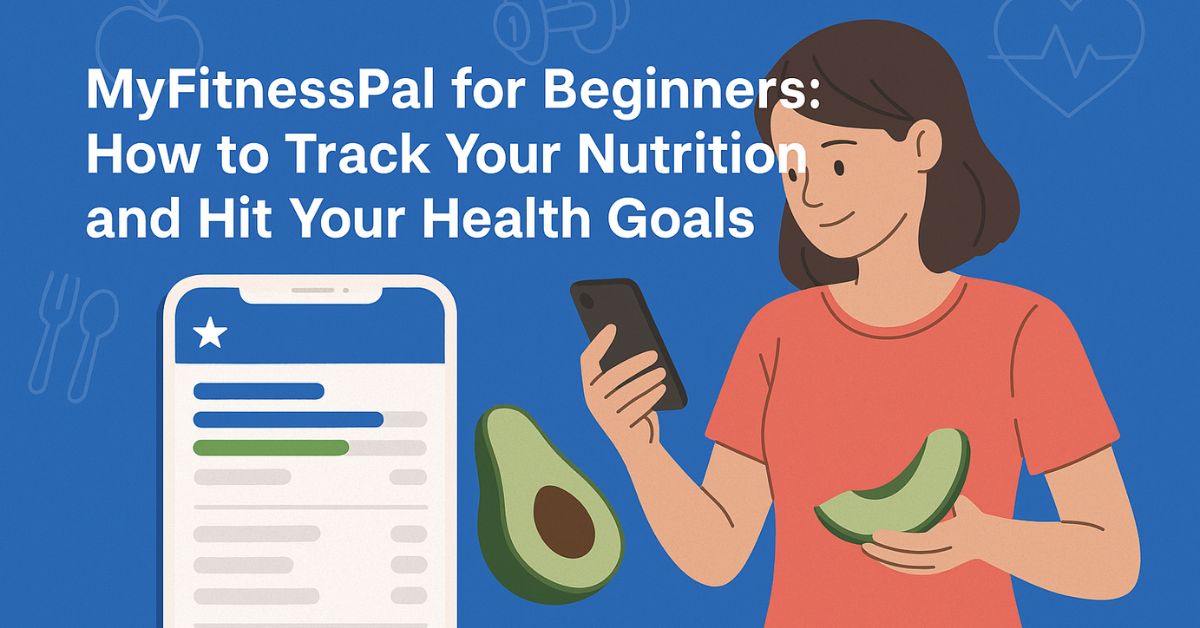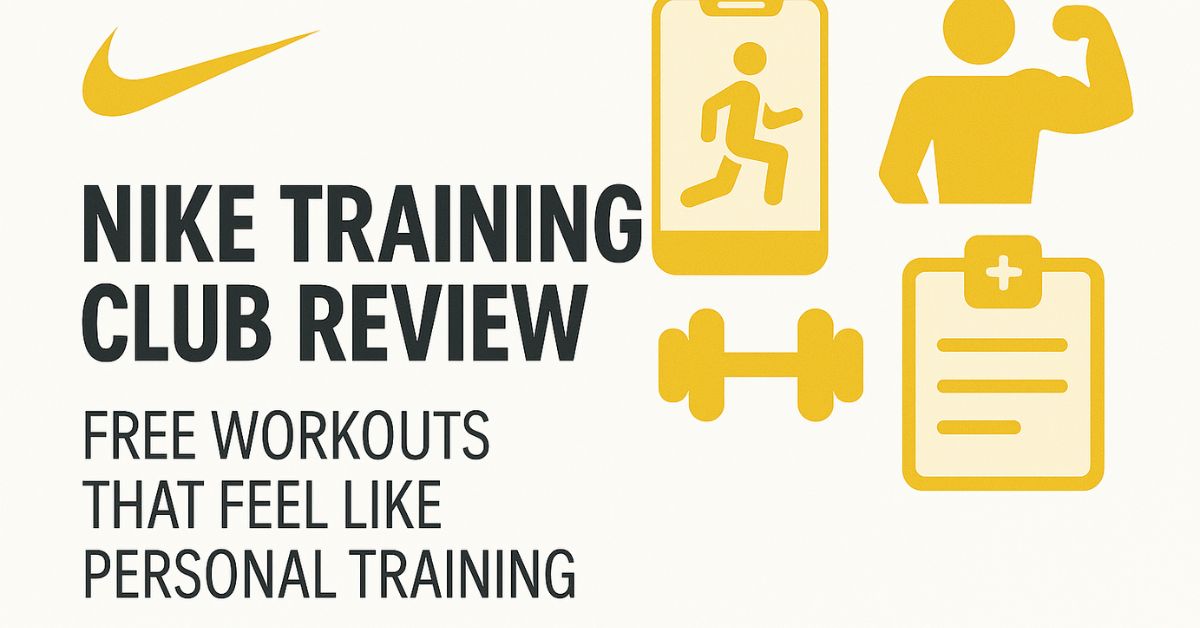Introduction
If you’ve ever wanted to take control of your eating habits, lose weight, gain muscle, or simply live healthier, MyFitnessPal is one of the best tools available to get you there. But as a beginner, the app can seem overwhelming at first — macros, calories, goals, streaks, and databases full of food items from around the world.
This complete beginner’s guide will walk you through how to use MyFitnessPal to track your nutrition, understand your eating habits, and hit your health goals step by step. Whether your goal is to lose fat, maintain your weight, or fuel intense workouts, you’ll know exactly how to get started and succeed.
1. What is MyFitnessPal and Why It Works
MyFitnessPal is a nutrition and fitness tracking app that helps you log your meals, exercise, and daily calorie intake. The app uses a database of over 11 million foods, including restaurant items and packaged products, to make tracking easy.
The magic behind MyFitnessPal is its ability to bring awareness and accountability to your eating habits. Studies show that people who track their food intake are more likely to reach and maintain their weight and fitness goals.
When you log your meals, you start to see patterns — how much sugar you consume, whether you’re hitting your protein goals, and which foods help or hinder your progress.
2. Setting Up Your MyFitnessPal Account
Step 1: Download and Sign Up
You can download the MyFitnessPal app for free on iOS or Android, or use it through your browser at myfitnesspal.com.
When signing up, you’ll be asked to enter:
- Your gender
- Age
- Height
- Weight
- Activity level
- Goal (Lose weight, maintain, or gain)
The app then calculates your daily calorie goal using the Mifflin-St Jeor equation — a standard formula for estimating your energy needs.
Step 2: Choose Your Goal
You can set a specific goal:
- Weight loss: Calorie deficit
- Maintenance: Calorie balance
- Muscle gain: Calorie surplus
MyFitnessPal will recommend a daily calorie target and divide it into macronutrient ratios (carbs, proteins, and fats). You can adjust these manually later under “Goals.”
3. Understanding Calories and Macros
Before you start logging, it’s important to know what you’re tracking.
- Calories: The energy your body uses for every activity.
- Protein: Builds and repairs muscles, bones, and tissues.
- Carbohydrates: Your body’s main energy source.
- Fats: Essential for hormones, brain function, and long-term energy.
A balanced approach for most people:
- 40% carbohydrates
- 30% protein
- 30% fat
If you’re bodybuilding, cutting, or keto dieting, you can tweak these percentages.
4. How to Log Your Meals
This is where the magic happens. MyFitnessPal makes logging meals intuitive and flexible.
Step 1: Tap the “+” Button
From your home screen, tap “Add Food” under breakfast, lunch, dinner, or snacks.
Step 2: Search for Food
You can:
- Search by food name (“grilled chicken breast”)
- Scan barcodes of packaged foods
- Select from recently used or frequent items
Each entry shows serving size, calories, and full macro breakdown.
Step 3: Adjust Servings
Be realistic with portion sizes. You can use kitchen scales or MyFitnessPal’s “Quick Add Calories” option for estimates.
Step 4: Save Meals
If you eat similar meals daily (like oatmeal breakfast), you can save them as “Meals” for faster logging next time.
5. Tracking Water and Exercise
MyFitnessPal isn’t just for food. You can also track hydration and workouts.
Track Water Intake
Tap “Water” and log the number of cups or milliliters. Staying hydrated helps metabolism, digestion, and performance.
Track Exercise
You can manually log workouts or connect fitness apps like:
- Fitbit
- Apple Health
- Garmin
- Strava
When synced, MyFitnessPal automatically adds calories burned, adjusting your daily intake goal.
6. Connecting Apps and Devices
One of MyFitnessPal’s strongest features is its integration with other platforms.
You can connect:
- Step trackers: Fitbit, Apple Watch, Samsung Health
- Workout apps: MapMyRun, Strava, Nike Run Club
- Smart scales: Withings, Renpho
These integrations automate tracking and give a full picture of your health.
7. How to Read Your Nutrition Dashboard
When you open MyFitnessPal, the main dashboard shows:
- Calories remaining: How much more you can eat today
- Macronutrient breakdown: Percentage of carbs, proteins, and fats
- Nutrient summary: Fiber, sugar, vitamins, sodium, etc.
Tap “Nutrition” to view:
- Calories: per meal and total
- Nutrients: like sodium, fiber, sugar
- Macros: in a colorful pie chart
This lets you spot trends, like too much sugar or low protein intake.
8. The Importance of Consistency Over Perfection
The goal isn’t to log perfectly — it’s to build awareness and consistency.
Even if you miss logging occasionally, the act of tracking regularly will:
- Teach you portion control
- Help you recognize food patterns
- Guide better decisions
If you’re new, aim to log at least one meal a day for the first week, then increase gradually until it becomes a habit.
9. Tips for Accuracy in Tracking
- Weigh your food – Use a digital kitchen scale. Guessing often leads to underreporting calories.
- Be specific – Log “grilled chicken breast (100g)” instead of just “chicken.”
- Check entries – Some user entries have errors; prefer verified ones with a checkmark.
- Plan ahead – Log meals before eating to stay within goals.
- Use the recipe feature – Add home-cooked meals and divide by servings for precise logging.
10. Using MyFitnessPal Premium (Optional)
While the free version is powerful, MyFitnessPal Premium unlocks advanced tools:
- Detailed nutrient insights (fiber, vitamins, sugar)
- Macro tracking by meal
- Custom daily goals (different macros for rest/workout days)
- Food analysis reports
- Ad-free experience
If you’re serious about hitting body composition or performance goals, the upgrade is worth considering.
11. Common Mistakes Beginners Make
- Logging inaccurately: Over- or underestimating portion sizes.
- Not tracking snacks or drinks: Coffee creamers, sauces, and juices add up quickly.
- Ignoring macros: Hitting calorie goals doesn’t mean balanced nutrition.
- Using it short-term: Sustainable results come from long-term consistency.
- Relying only on exercise calories: Don’t eat back all calories burned from workouts unless you’re tracking precisely with a wearable.
12. How to Set Realistic Health Goals
Your goals should be specific, measurable, and achievable.
Examples:
- “Lose 1 pound per week by maintaining a 500-calorie daily deficit.”
- “Increase protein intake to 120g per day.”
- “Stay under 2300mg sodium per day.”
Use MyFitnessPal’s Progress tab to track weight, body measurements, and streaks over time.
13. Staying Motivated with MyFitnessPal
The app keeps you motivated with:
- Daily reminders
- Progress graphs
- Community support
- Badges and streaks for consistency
You can also add friends for accountability. Sharing progress increases success rates and builds support.
14. Pairing Nutrition Tracking with Exercise
To maximize results, combine nutrition tracking with fitness:
- Strength training + Protein tracking = Muscle growth
- Cardio workouts + Calorie control = Fat loss
- Yoga or Pilates + Hydration tracking = Improved flexibility and energy
Fuel your workouts by eating the right balance of carbs and protein before and after training.
15. Beyond Weight Loss — Total Wellness
MyFitnessPal isn’t just for losing weight — it’s a lifestyle management tool.
You can use it to:
- Manage diabetes by tracking sugar intake
- Support heart health by limiting sodium and trans fats
- Improve mental focus through better nutrition
- Identify food intolerances or triggers
In short, MyFitnessPal empowers you to make informed, data-driven health choices every day.
16. Troubleshooting: When Progress Stalls
Sometimes progress plateaus. Don’t panic — use MyFitnessPal data to troubleshoot:
- Recheck portions: Are you logging accurately?
- Recalculate goals: Your calorie needs change as you lose weight.
- Review macros: Maybe you need more protein or fiber.
- Sleep and stress: Both affect metabolism and appetite.
Consistency plus honest tracking will always reveal the next step.
17. Practical Example: A Day of Tracking
Breakfast:
- 1 cup oatmeal – 154 calories
- 1 tbsp peanut butter – 90 calories
- 1 banana – 105 calories
Lunch:
- 4 oz grilled chicken – 180 calories
- 1 cup rice – 200 calories
- 1 cup broccoli – 55 calories
Dinner:
- 5 oz salmon – 250 calories
- 1 cup quinoa – 220 calories
- 1 tbsp olive oil – 120 calories
Snacks:
- Greek yogurt – 100 calories
- Almonds (10 pieces) – 70 calories
Total: ~1,544 calories
This example shows how MyFitnessPal tallies everything automatically — saving you time and mental energy.
18. Final Thoughts: Turn Awareness into Action
MyFitnessPal is more than a calorie counter — it’s your personal nutrition coach.
By tracking consistently, you’ll understand what fuels your body, what drains it, and how to create balance.
Remember:
- Don’t chase perfection — chase progress.
- Use your data to adjust habits weekly.
- Combine tracking with movement, sleep, and mindfulness.
Whether your goal is to shed pounds, build strength, or simply eat better, MyFitnessPal helps turn awareness into transformation.


